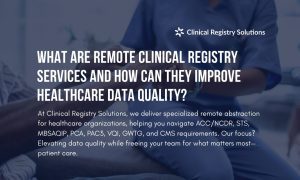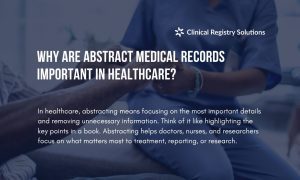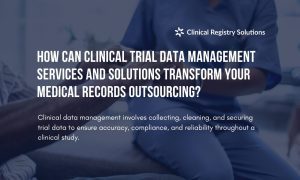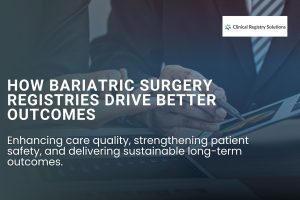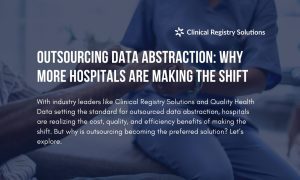Ever feel nervous about what would happen if you or someone close to you had a stroke? That worry is real, and it’s something many people share. Strokes can change lives in seconds. But what if you knew that hospitals across the country are following strict plans to give stroke patients the best care possible? That’s where the Get With The Guidelines–Stroke (GWTG-Stroke) program comes in, to help hospitals give you the proper care, at the right time, every time.
This blog is for you and your loved ones. It explains in easy words how these programs help hospitals spot problems, act faster, and save lives. You’ll learn why details matter. You’ll see how following quality measures can make all the difference between a long recovery and a brighter future after a stroke.
Why Should You Care About Stroke Quality Measures?
First, let’s talk about your concerns. Most people want three things if a stroke ever happens:
Fast, safe treatment.
Doctors and nurses who follow the best steps.
A real chance for recovery.
But not all hospitals do things the same way. Some are quicker. Some use newer ideas. Some might miss a step, especially in stressful moments. That’s scary, right?
You want to know if your hospital has a plan. GWTG-Stroke Quality Measures give hospitals that plan. They work like a roadmap, so every patient gets the same high-quality care.
Inside the GWTG-Stroke Quality Measure
So what is this GWTG-Stroke stuff? It’s a set of rules and steps that hospitals follow, based on strong science and lots of research. Created by leaders at the American Heart Association, this program helps hospitals track and improve what they do for stroke patients.
Here’s how it works for you:
Hospitals record specific facts about your care, from how fast you get a brain scan to whether you go home with the right medicine.
They check those facts (called “clinical abstraction for stroke programs”) and compare them to goals.
If the hospital’s numbers aren’t as good as they should be, teams find out why and fix the problems.
Quality measures matter because they make sure you get the proper tests, treatments, and follow-ups. If your hospital uses these, you can feel more confident in their care, even when things move quickly and emotions run high.
What’s Clinical Abstraction, and Why Should You Care?
Sounds fancy, right? Here’s what it really means: When you are treated in a hospital, doctors and nurses write down what happens step by step in your chart. But reading all those notes isn’t easy. Clinical abstraction is when a trained person pulls out the essential details, like when your medicine was given or what test results showed.
Why does this matter for you? Hospitals report those details to big programs like GWTG-Stroke. If the information is wrong or missing, hospitals won’t learn what they need to fix. That’s why every step, every time, really counts. When hospitals care about good abstraction, you’re more likely to get better, safer care.
Real Benefits for You and Your Loved Ones
If your hospital uses the GWTG-Stroke program, you’ll likely get treated more quickly. That’s life-changing.
Nurses and doctors will follow the most up-to-date rules, so nothing important gets missed.
If you need medicine to break up a clot, you’ll probably get it faster. Hospitals that use these programs give these medicines sooner than others, making it more likely for you to go home instead of to rehab.
You’ll be checked for problems like swallowing issues or blood clots, both of which can be dangerous after a stroke.
Before you leave the hospital, you’ll get help planning for physical therapy or rehab, making recovery easier.
All these steps come from the program’s rules. Over the past 20 years, hospitals using the GWTG-Stroke Quality Measure have helped thousands more patients return home and cut the risk of dying after a stroke by following the program closely.
Heart Failure Quality Reporting: Why It Connects
Here’s a fact you might not know: If you have heart failure, your risk for stroke is higher. Quality reporting in heart failure helps improve care, too. When hospitals watch their data and fix mistakes, they notice problems earlier, stopping strokes before they start.
That’s why GWTG-Stroke works together with heart failure quality reporting. Both use the duplicate careful checking, so you get better care all around. Knowing your hospital does both means they’re paying attention to the details that count for your health.
The American Heart Association Stroke Initiative
You might wonder, “Who runs all this?” The American Heart Association is one of the top groups fighting stroke and heart disease in the world. Their stroke initiative is trusted, and they don’t guess, they use research and facts. When hospitals follow their plans, you can trust care will be solid and safe. It’s not just about saving lives, it’s about making sure survivors have hope and support after leaving the hospital.
What Are Stroke Quality Improvement Measures?
Here are a few real-life steps the GWTG-Stroke Quality Measures track:
Door-to-CT Time: How fast do you get a brain scan? The goal is under 25 minutes.
Clot-Busting Medicine: If you need a drug to dissolve a clot, can you get it within 60 minutes of hospital arrival?
Preventing Complications: Have you been checked for swallowing problems or blood clots?
Education: Have you been given information on how to avoid another stroke?
Follow-Up: Does someone make sure you have a rehab plan?
If your hospital checks every box, your care is likely to be much better. Even more, when hospitals use these improvements through the GWTG-Stroke program, success rates climb. Time after time, studies prove that care in these hospitals is quicker, smarter, and more likely to get you out of the hospital and back home.
What If Your Hospital Isn’t in the Program?
Ask about it. Let’s say you’re in a smaller town. If your local hospital doesn’t use the GWTG-Stroke registry, ask if they follow any similar program. Your questions might help bring better care to your whole community.
Don’t forget, many hospitals put their results online or on public reports. Use this information for you and your family so you can make wise choices when it matters most.
Key Takeaways for You
Programs like GWTG-Stroke focus on making stroke care the same for everyone.
They help your hospital treat you faster, smarter, and more safely.
Every detail gets tracked so doctors and nurses know what to fix.
When combined with heart failure quality reporting, your risk for stroke and other heart problems drops.
Following the rules leads to real improvement, not just the numbers, but lives changed and families saved.
Frequently Asked Questions
What does “Get With The Guidelines” mean for my care?
It means your hospital is using a plan that’s proven to get better results. Each step is measured and checked, so nothing gets missed for you.
How does clinical abstraction keep my care safe?
Most mistakes in hospitals happen because someone forgets or misses a step. With abstraction, a trained specialist makes sure every detail, like timing, results, and treatments, is recorded and fixed if wrong.
Does this help everyone, or just certain patients?
The program is for all stroke patients, kids, adults, men, and women. Everyone gets the same level of attention and quick action.
What happens if my hospital doesn’t use this program?
Other programs can also help, but GWTG-Stroke is one of the best. If your hospital isn’t in the program, ask what standards they do follow.
Is this just for strokes?
No, Many hospitals use similar quality measures for heart failure, heart attacks, and more.
Conclusion: Your Next Step for Better Care
No one wants to think about having a stroke. But if it happens to you or someone you love, you want every step to be the right one. GWTG-Stroke Quality Measures make that possible, from your first moment in the ER to your trip home.
If you’re looking for a hospital that’s serious about quality, ask how they use these programs, or others like them. Finding answers before you need them can give you peace of mind.
Stroke care has changed for the better, and hospitals using these measures are leading the way for your safety and health. Clinical Registry Solutions is proud to support hospitals and help teams stay prepared, so patients just like you get back to what matters most, living your life.
Want to know more about how hospitals collect stroke care data? Check out the GWTG stroke registry page.
